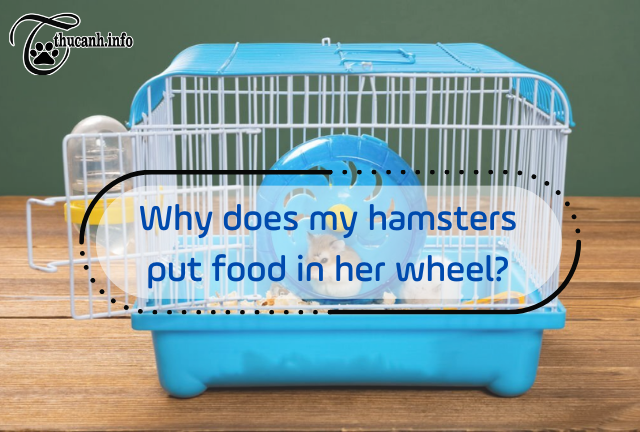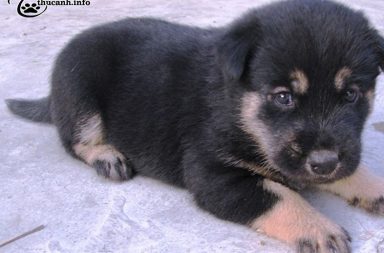Hamsters are adorable, tiny creatures that bring a lot of joy to our lives. They have unique behaviors that can sometimes leave us scratching our heads, one of why does my hamsters put food in her wheel. If you’re a hamster owner wondering why your furry friend engages in this behavior, you’ve come to the right place. In this article, we will explore the reasons behind this peculiar habit and provide answers to other common questions related to hamster behavior.

The Surprising Reason Why Your Hamster Stashes Food in Her Wheel
1. Why does my hamsters put food in her wheel
Hamsters put food in their wheel because of their natural hoarding instinct. In the wild, they hoard food to prepare for scarcity. Even in captivity, this behavior persists as they store their stash in various places, including the wheel. It’s a normal behavior and doesn’t necessarily indicate any issues with your hamster’s well-being.
2. The Reasons Behind Hamsters Putting Food in Their Wheels
If you’ve noticed your pet hamster stuffing its wheel with pieces of food, there could be several reasons for this behavior. Here are some possible explanations:
2.1 Hoarding Behavior
As mentioned earlier, hamsters have a natural instinct to hoard food. They tend to accumulate as much food as possible to ensure they have enough to eat during times of scarcity. Hoarding behavior is also known as caching, and it’s not uncommon for hamsters to hide food in various locations around their cage. Putting food in their wheel could be another hiding spot for them.
2.2 Playful Behavior
Hamsters are active and playful animals that need plenty of exercise. Running on their wheel is a great way for them to burn off energy and stay fit. However, running on a bare wheel can get boring over time. By putting pieces of food in their wheel, hamsters create an exciting and challenging environment for themselves.
2.3 Creating a Nest
Hamsters also use food to create a soft and comfortable nest. In the wild, they would gather leaves, grass, and other materials to build a cozy home. Putting food in their wheel could be a way for them to add a layer of insulation to their nest and make it more comfortable.
3. The Role of Burrowing in a Hamster’s Behavior

The Mystery Unraveled: Why Do Hamsters Put Food in Their Wheels?
3.1 Signs of Boredom and Stress in Hamsters
|
High-energy Nature and Enrichment |
Signs of Boredom and Stress |
Seeking Professional Advice |
| Hamsters are naturally energetic creatures, requiring ample outlets for physical activity and mental stimulation. | Bored or stressed hamsters may exhibit excessive grooming, overeating, restlessness, and even aggression. | If you notice persistent signs of boredom or stress in your hamster, it’s crucial to consult a veterinarian or an experienced hamster expert for further guidance and evaluation. Professional advice can help identify underlying issues and |
3.2 Enriching the Environment to Prevent Food Hoarding in the Wheel
| Enriching the Environment for Natural Behaviors | Creating a Stimulating Habitat | Regular Interaction and Playtime |
| Provide a variety of toys, tunnels, and hiding spots to allow hamsters to engage in natural behaviors like burrowing. | Introduce puzzle toys, rotate toys regularly, and provide opportunities for exploration outside the enclosure to keep hamsters mentally engaged. | Spending quality time interacting with your hamster through supervised playtime outside the enclosure can also prevent boredom and foster a stronger bond. Ensure their enclosure has enough space to explore and exercise. |
4. Other Hamster Behaviors You Should Know About

exploring-the-connection-between-food-and-wheels
Why does my hamsters put food in her wheel? Now that we’ve explored why hamsters put food in their wheels, let’s take a look at some other common behaviors you might observe in your furry friend.
4.1 Chewing
Hamsters have teeth that never stop growing, so they need to chew on things to keep them from getting too long. Provide chew toys and wooden blocks for your hamster to gnaw on to prevent dental problems.
4.2 Digging
Digging is another instinctual behavior that hamsters engage in. They use digging as a way to create burrows for themselves in the wild. Providing your pet with a digging box filled with clean soil or sand can satisfy this natural urge.
4.3 Sleeping
Hamsters are nocturnal creatures, which means they sleep during the day and become active at night. Make sure your pet has a quiet and dark place to rest during the daytime hours.
5. Frequently Asked Questions (FAQs)
5.1 Is it normal for my hamster to run on its wheel all night?
Yes, hamsters are nocturnal animals and are most active at night. Running on their wheel is a great way for them to stay fit and active.
5.2 How often should I clean my hamster’s cage?
You should clean your hamster’s cage at least once a week. Make sure to remove any uneaten food, feces, and urine, and replace bedding with fresh material.

From Instinct to Adaptation: The Fascinating Science Behind
5.3 Can hamsters live alone, or do they need a companion?
Hamsters are solitary animals and prefer to live alone. Keeping two hamsters in the same cage can lead to fighting and injuries.
5.4 How much should I feed my hamster?
Hamsters have small stomachs and don’t require a lot of food. Give your pet about a tablespoon of hamster food per day, along with fresh fruits and vegetables as treats.
5.5 Why is my hamster biting its cage bars?
Biting on cage bars is a common sign of boredom or stress. Make sure your hamster has plenty of toys to play with and enough space to move around.
6. Conclusion
The above post, thucanh.info answered for you “why does my hamsters put food in her wheel”. Hamsters are fascinating creatures whose unique behaviors can sometimes confuse their owners. Feeding the wheel is just one of many instinctive habits these little animals exhibit. By understanding the reasoning behind this behavior, you can provide your furry friend with a fun and healthy environment in which to thrive.


